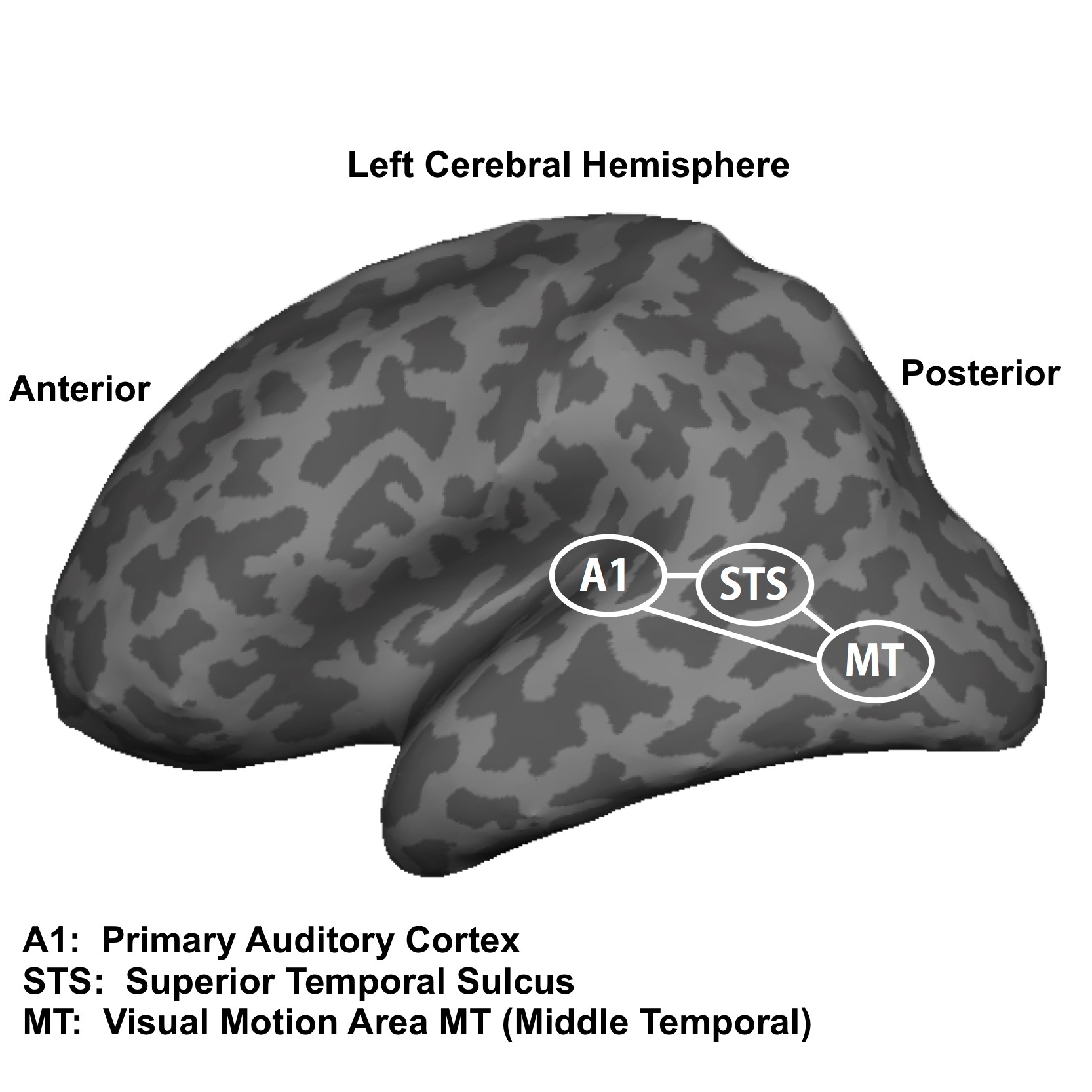Brain network differences in audio-visual processing between native speakers of English and Japanese
Japanese people less susceptible to lip movements when listening to another speaker: Evidence from neuroimaging studyDid you know that native Japanese speakers and native English speakers process auditory and visual information differently? A recent Japanese collaboration between Kumamoto University, Sapporo Medical University and the Advanced Telecommunications Research Institute International (ATR) has revealed a clear difference in the brain network activation between these two groups of people during face-to-face speech communication.
When speaking to someone face-to-face, it is known that visual speech information, such as lip movement, affects the perception of voice information from the ears. According to an analysis of previous behavioral studies, native Japanese speakers are not influenced by visual lip movements as much as native English speakers. Furthermore, researchers measured and analyzed brain activity patterns using fMRI, functional magnetic resonance imaging, to elucidate the differences in brain activity between these two languages.
The research project examined 24 native Japanese speakers and 22 native English speakers to clarify the difference between the groups. The functional connectivity between the primary auditory area, the area of the brain dealing with hearing, and the middle temporal area, the area of the brain dealing with visual motion information, was stronger in native English speakers than in native Japanese speakers. This result strongly suggests that auditory and visual information are associated with each other at an early stage of information processing in the native English speaker's brain. On the other hand, the association is made at a later stage in the native Japanese speaker's brain. The functional connectivity between auditory and visual information, and the manner in which the two types of information are processed together was shown to be clearly different between native Japanese speakers and native English speakers.
"Video materials are often used when studying a foreign language," said study leader Professor Kaoru Sekiyama of Kumamoto University. "However, it has been reported that video materials do not have a very positive effect for native Japanese speakers. It may be that there is a unique manner in which Japanese people process information that is behind this phenomenon, such as what we see in this most recent discovery."
This finding was posted on "Scientific Reports," on August 11th, 2016.
[Citation]
J. Shinozaki, N. Hiroe, M. Sato, T. Nagamine, and K. Sekiyama, “Impact of language on functional connectivity for audiovisual speech integration,” Scientific Reports, vol. 6, pp. 31388-31394, 08 2016.
[Paper info]
TITLE: Impact of language on functional connectivity for audiovisual speech integration
AUTHORS: Jun Shinozaki, Nobuo Hiroe, Masaaki Sato, Takashi Nagamine and Kaoru Sekiyama
JOURNAL: Scientific Reports
DOI: 10.1038/srep31388
URL: http://www.nature.com/articles/srep31388

CREDIT: Dr. Kaoru Sekiyama
USAGE RESTRICTIONS: This image may only be used in conjunction with the accompanying release, or stories written about the work described in the release with reference to the original work.
USAGE RESTRICTIONS: This image may only be used in conjunction with the accompanying release, or stories written about the work described in the release with reference to the original work.
